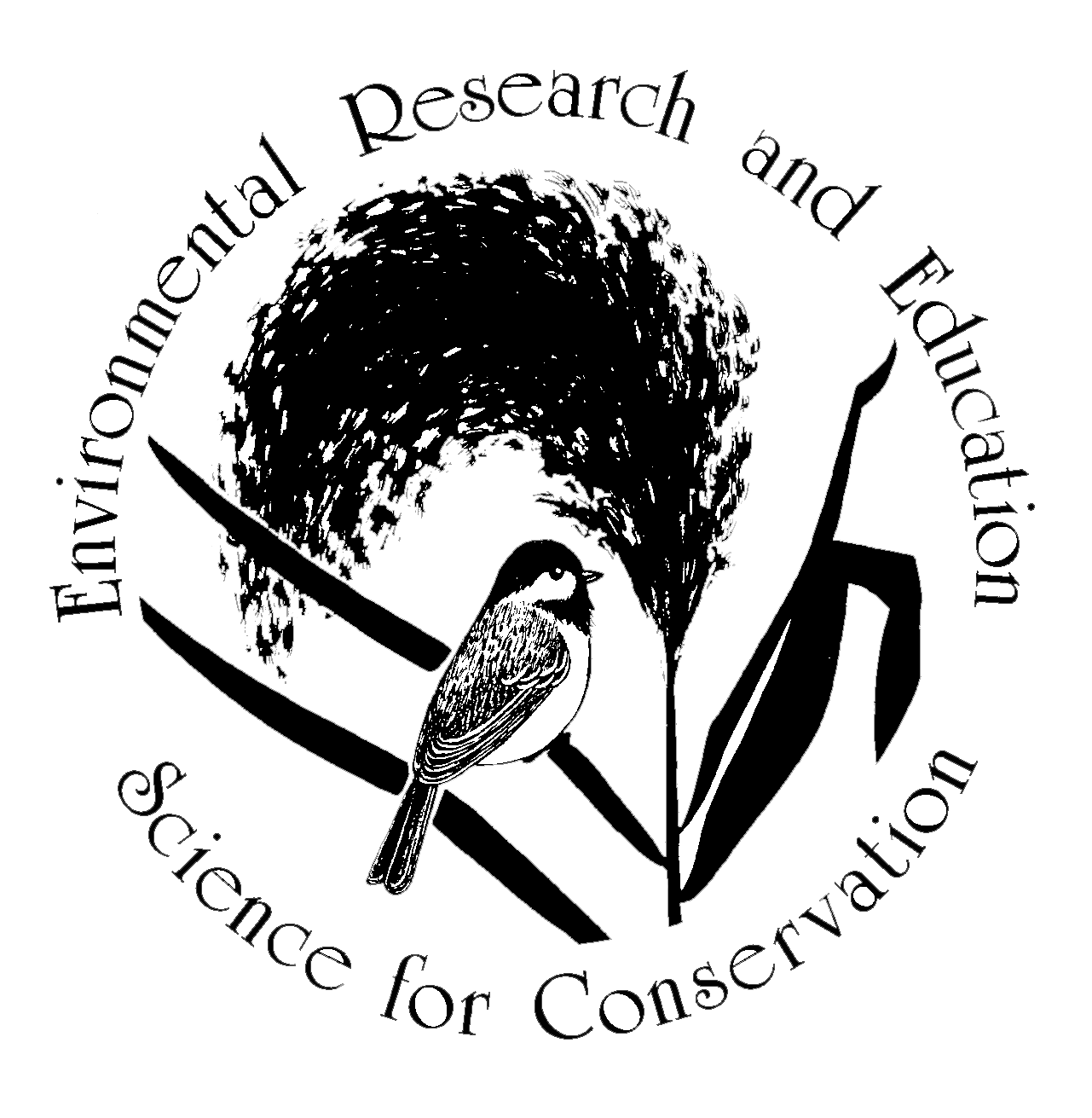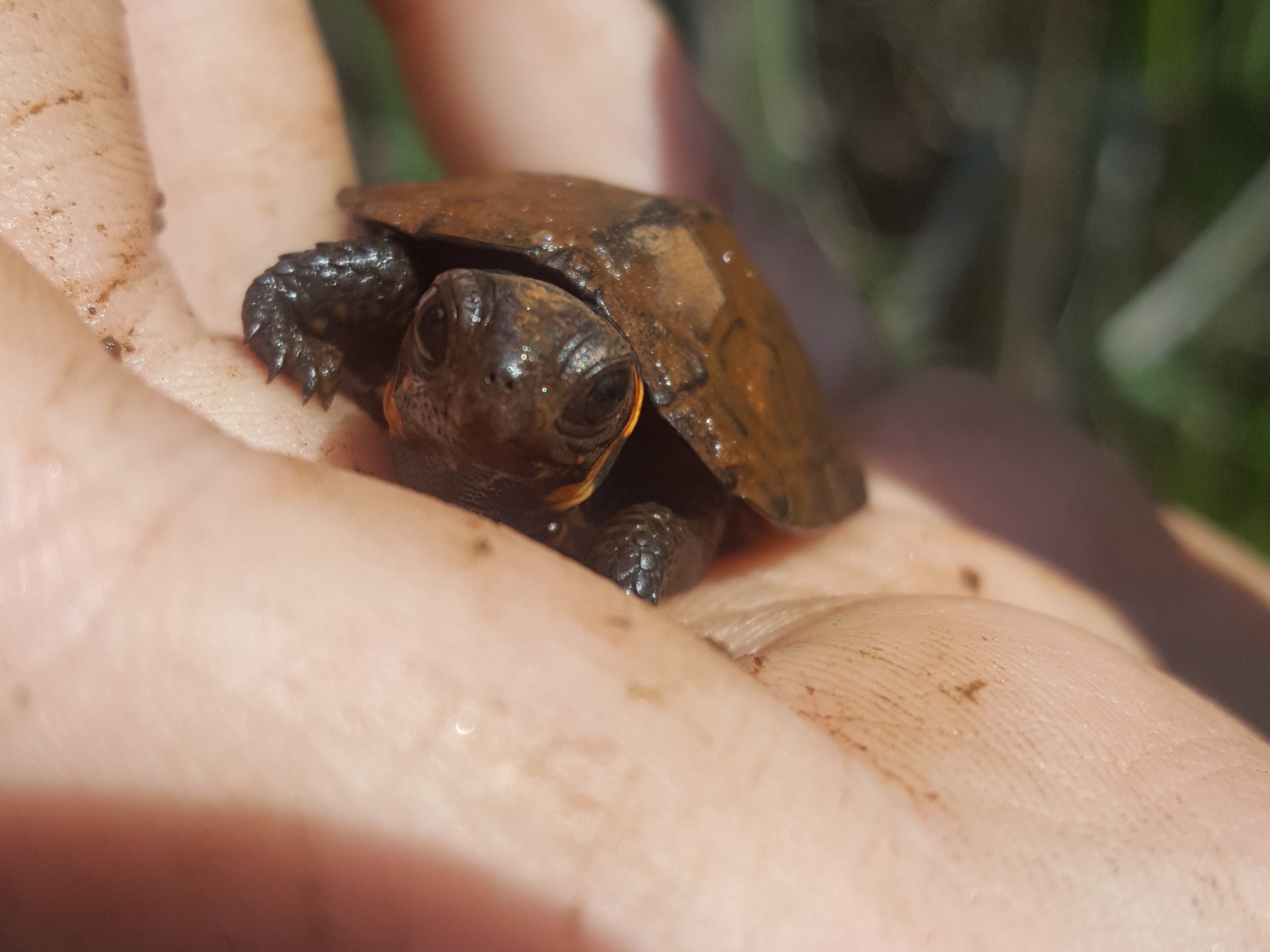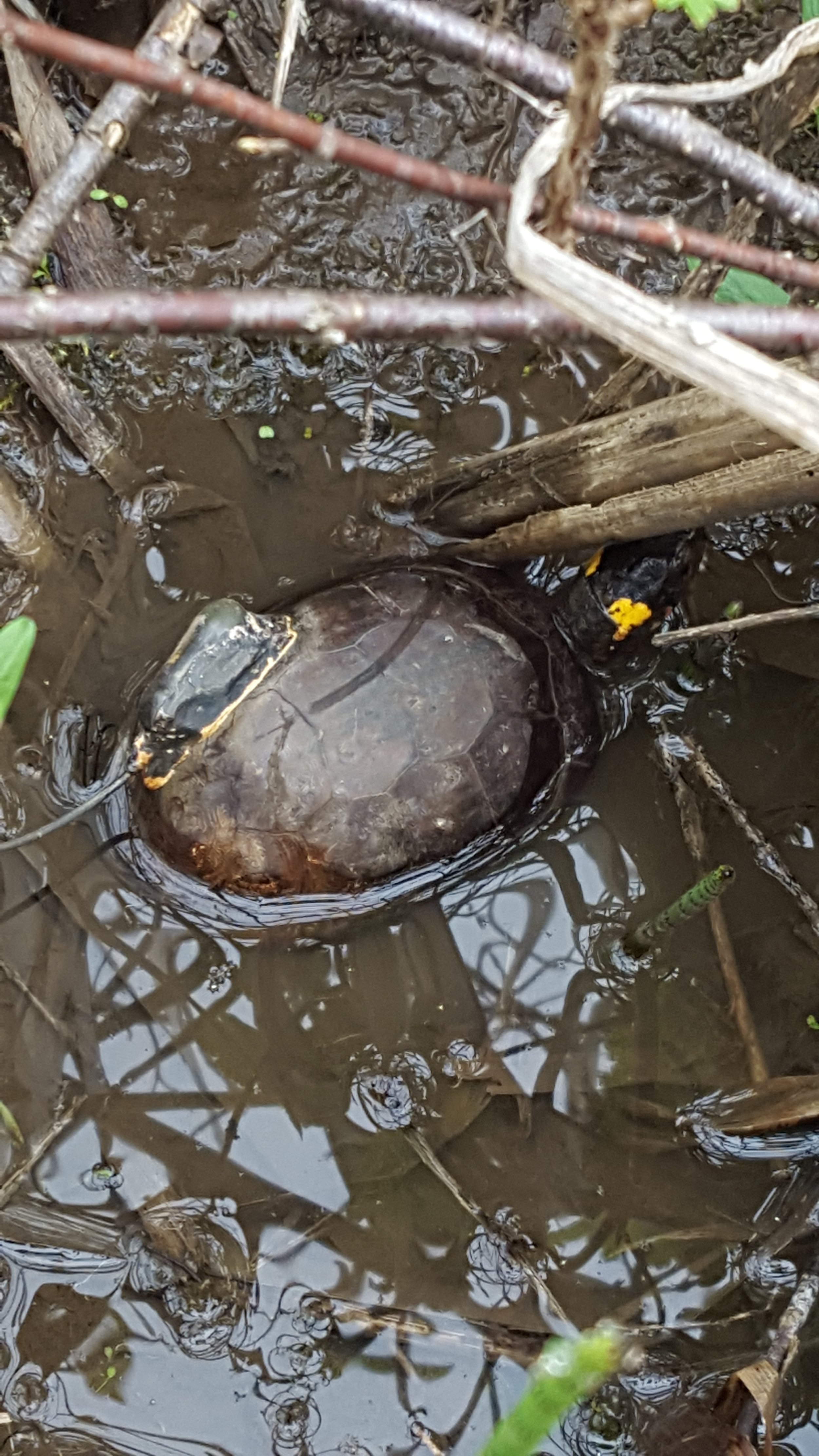Three years, two cows, and twenty-five bog turtles
young bog turtle
Note: This article originally appeared in News from Hudsonia Volume 28(2), Fall 2014.
The bog turtle (Glyptemys muhlenbergil) is a tiny turtle of conservation concern that is rare throughout its range from Georgia to Massachusetts. It is federally listed as Threatened and New York State-listed as Endangered. Bog turtles occur in small populations that rarely leave groundwater-fed, herbaceous wetlands with soft, wet soils. Rich fens are the typical core habitat for the bog turtle in southeastern New York. These are unusual habitats in the region, characterized by calcium-rich groundwater seepage, low and (often) sparse vegetation, and a distinctive plant community. Destruction of habitat, illegal collecting, and development of tall dense vegetation in the core wetlands have caused the endangerment of this species.
Several bog turtle wetlands in New York have been protected by acquisition or easement, but most are yet unprotected. The wetlands must be managed to keep the vegetation low and open such that sunlight can warm the ground, the turtles, and their eggs. Evidently, bog turtle wetlands have been kept open historically by local conditions that inhibited taller plants, as well as fire, beaver activity, and large grazing animals. During the past couple of centuries, domestic livestock seem to have substituted for large native herbivores in maintaining some of the bog turtle wetlands in New York and elsewhere.
Othoniel Vazquez Dominguez in the study fen with a grazing cow
Biologist Jason Tesauro has developed methods for using cows, sheep, and goats, as well as hand-cutting, to reduce the height and density of vegetation in degraded bog turtle wetlands in New Jersey and New York. Hudsonia has had the privilege of collaborating with Jason, a dairy farmer, the New York State Department of Environmental Conservation (DEC), and the US Fish and Wildlife Service for the past three years on a project to improve habitat for bog turtles at a Hudson Valley site. This wetland retained sedge and low shrub-dominated fen-like areas but had a large dense stand of cattails as well as many tall shrubs that reduced the habitat suitability for bog turtles. Jason erected fences and manually removed about 100 shrub stems in the first year prior to spring emergence of the turtles, and then introduced two young dairy cows to graze in the wetlands. The cows had access to upland grazing and supplemental food to ensure their health, and were kept on the site for six months beginning in May each year with different heifers.
bog turtle with transmitter attached
Each year, with the assistance of Hudsonia research interns, we radio-tracked several adult bog turtles through their active season, located bog turtle nests, measured vegetation on permanent plots, and surveyed the entire flora of the core habitat. We have mapped turtle location data, and statistically analyzed the species cover data in the vegetation plots for years 1 and 2, and are now analyzing the year 3 (2014) data and preparing a report on all three years.
The cows have done a superb job of opening up the cattail stand and even reducing the volume of tall shrubs, and the bog turtles demonstrated an affinity for the mucky wet cowpaths. Cover of cattail and a nonnative weed-great hairy willow herb (Epilobium hirsutum) – has decreased, and smaller plants have filled in some of the space thus created. The turtles have extended their home ranges a little, continuing to favor the margins of the cattail stand.
We continued the vegetation sampling and flora survey, and studied the wetland soils to better understand why the turtles use certain areas and not others. We expect this study to yield information that will confirm and refine prescribed grazing as an innovative method for managing herbaceous wetland vegetation. Vegetation management is being conducted for the bog turtle (and "for other rare species such as New England cottontail and certain marsh birds) in many areas, but without detailed study of the effects on the animals and plants we typically do not know how well management is working or how to improve an unsuccessful management protocol.
The study has been supported by federal Landowner Incentive Program funds through the DEC. We are grateful to the landowners for their collaboration on this project; their names are confidential to protect the turtles from collectors. Kristen Bell Travis, Suzanne Macey, Laura Lukas, Othoniel Vazquez Domfnguez, Robert Naczi, Tierney Rosenstock, and Dave Fischer helped with the study, and the indispensable research interns were Nicole Lopane, Angela Cross, Veronica Steckler, Jillian Bonitatibus, Lea Stickle, and Melissa Fadden.
Further reading on Jason's earlier prescribed grazing research in New Jersey here:
Tesauro, J. 2001 . Restoring wetland habitats with cows and other livestock. Conservation in Practice 2(2):26-31
Tesauro, J. and D. Ehrenfeld. 2007. The effects of livestock grazing on the bog turtle [Glyptemys (= Clemmys) muhlenbergii]. Herpetologica 63(3):293-300.




